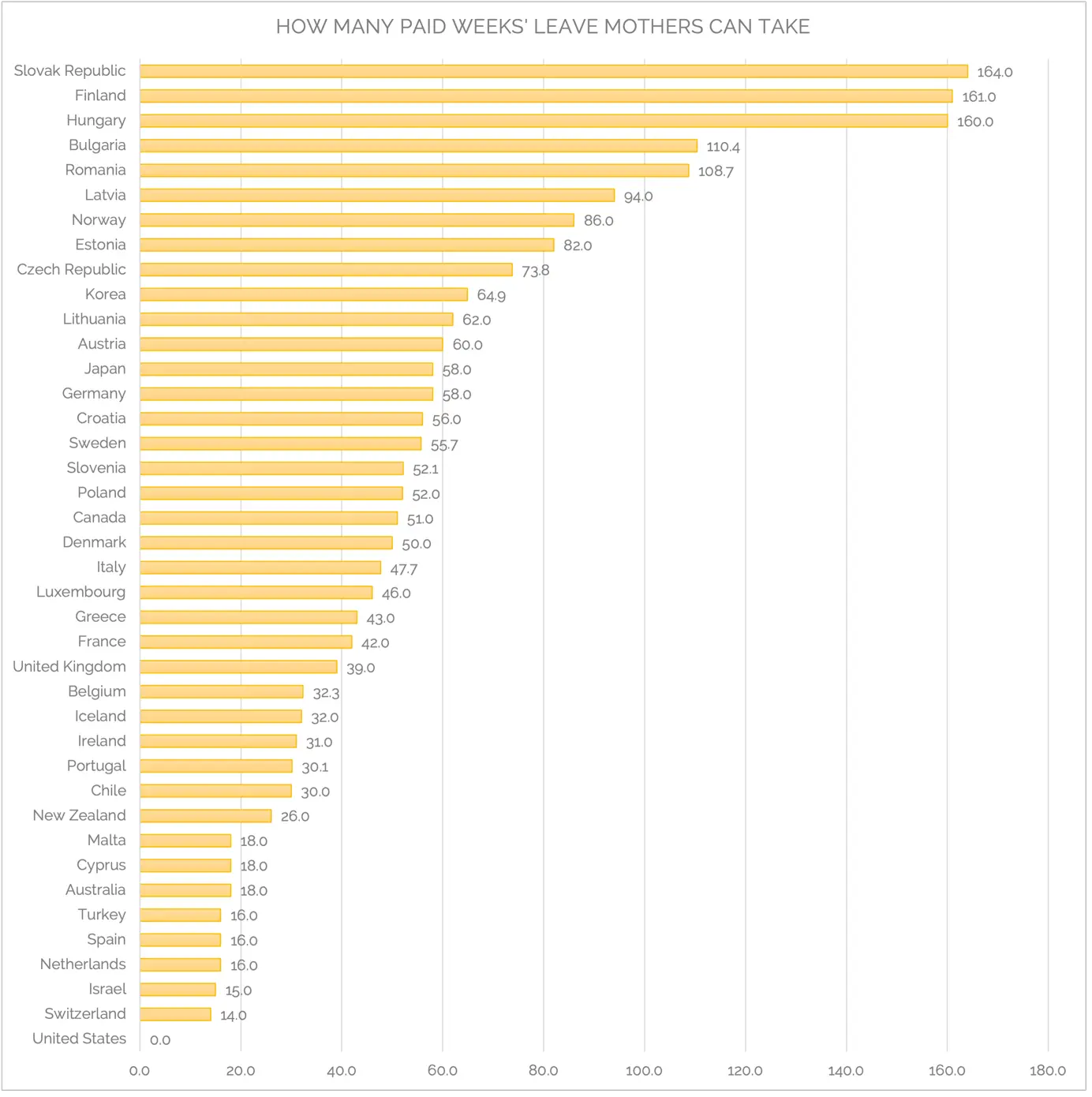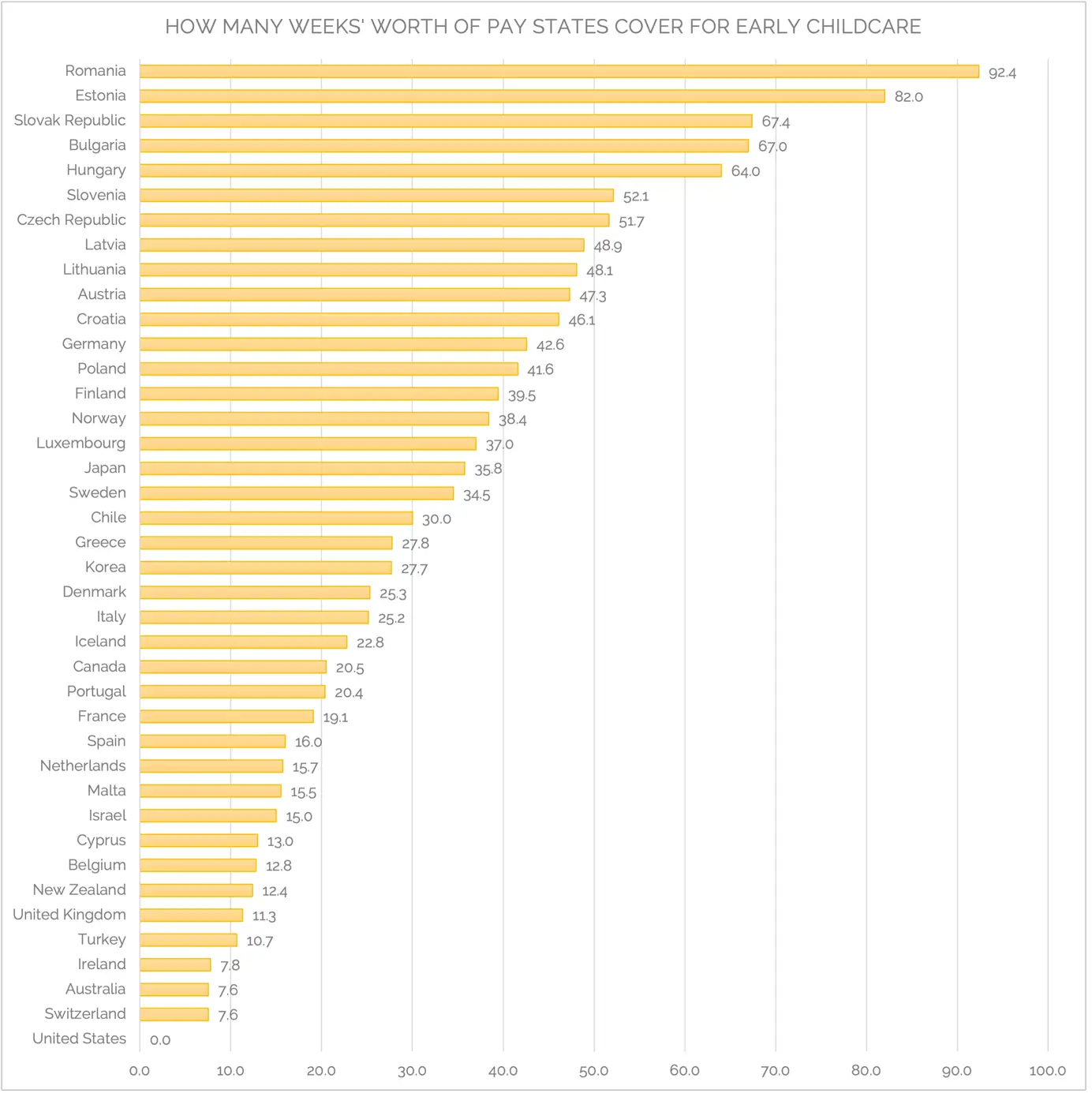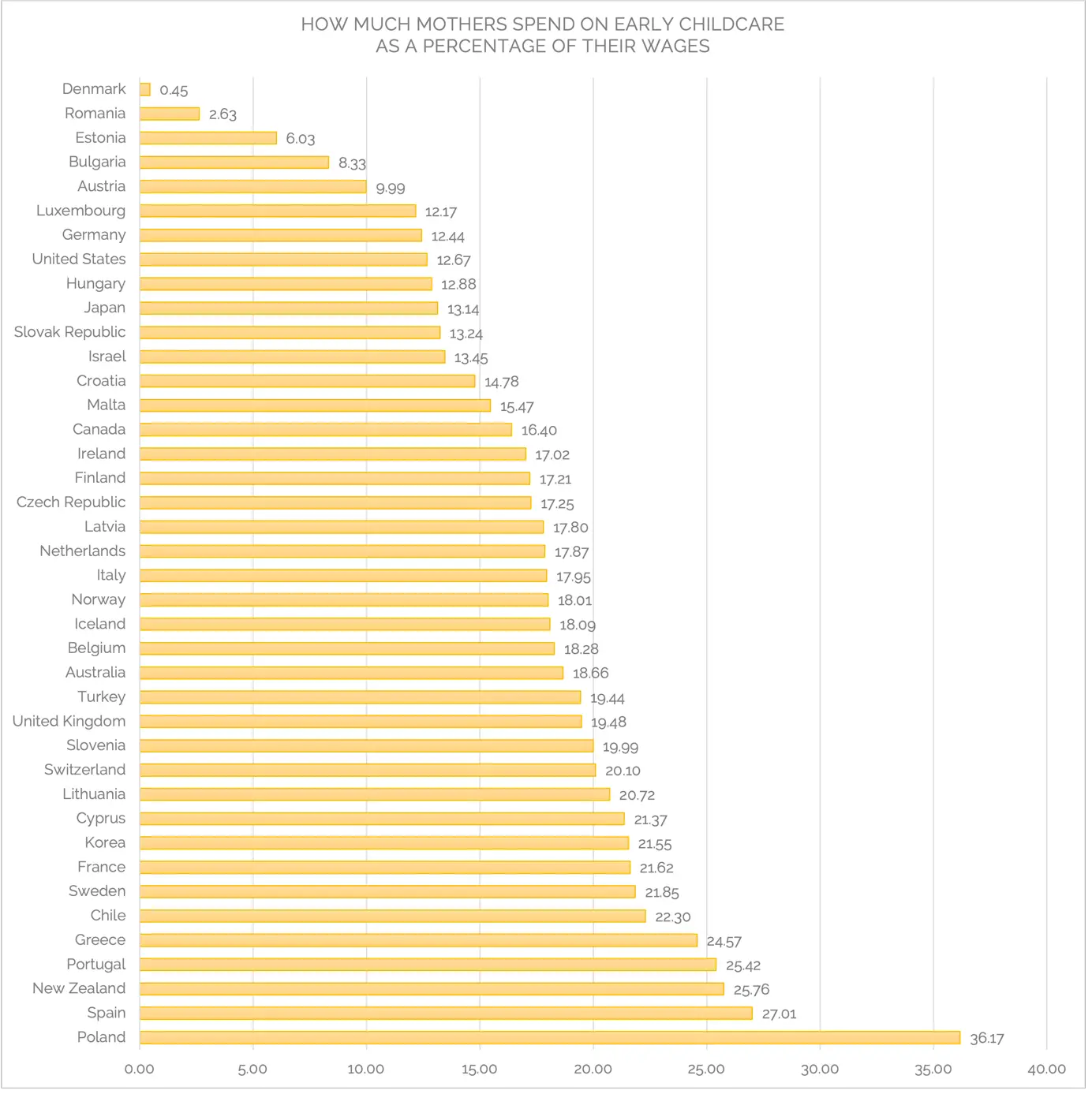
CommonCentsMom.com is advertiser-supported: we may earn compensation from the products and offers mentioned in this article. However, any expressed opinions are our own and aren't influenced by compensation. The contents of the CommonCentsMom.com website, such as text, graphics, images, and other material contained on this site (“Content”) are for informational purposes only. The Content is not intended to be a substitute for professional financial or legal advice. Always seek the advice of your Financial Advisor, CPA and Lawyer with any questions you may have regarding your situation. Never disregard professional advice or delay in seeking it because of something you have read on this website!
The US is the only country in the developed world that does not offer any paid maternity leave. States with around half of US’ GDP and up to six times lower average salaries are more generous than the US when it comes to offering financial support to mothers.
A study we conducted analyzed the costs of early childcare for women in 40 countries, relative to their incomes, how much time off they are offered and the equivalent of this time in full-rate paid weeks.
The research found that the US is the only country in the developed world to offer zero paid maternity leave. There is no maternity leave structure in place in the United States, meaning women are not allowed any time off immediately after birth, unlike in all the other OECD and EU countries studied by our editors. Switzerland is the second worst for early childcare-related time off, with only 14 weeks of maternity leave paid at a 53.9% rate of a full wage. Israel follows closely behind, where mothers can only take 15 weeks off, however, these are paid at full rate.

Source: www.commoncentsmom.com study based on 2020 and 2021 data from national statistics offices, OECD and the World Bank
The best countries for the total time allowed for maternity, parental and home care leave are the Slovak Republic (164 weeks), Finland (161 weeks) and Hungary (160 weeks). However, the rates at which mothers are compensated in these countries varies considerably.
The most generous countries for full-rate equivalent of early childcare leave are Romania, Estonia and the Slovak Republic. For example, mothers in Romania can take a total of 108.7 weeks off to take care of their newborn for which the state covers the equivalent of 92.4 weeks of their full wages. Estonia covers 100% of a mother’s pay, but for a shorter period – 82 weeks, which is the maximum time off possible there. The Slovak Republic, besides offering the longest leaves of all, also compensates mothers generously with 67.4 weeks’ worth of full pay.

Source: www.commoncentsmom.com study based on 2020 and 2021 data from national statistics offices, OECD and the World Bank
The least generous countries are, surprisingly, the US, Switzerland and Australia. Since there is no maternity leave whatsoever in the US, the state covers no costs in relation to this. Meanwhile, both Switzerland and Australia only cover 7.6 weeks’ worth of full wages for the care of newborns. The list continues with Ireland, Turkey and the United Kingdom, which are also among the least generous countries in the developed world for maternity leave pay.
The study also evaluated the cost of early childcare once state support lapses and until the child turns two years of age. The calculation is based on mothers on a median female wage, who return to work and share the cost of a childminder on the lowest possible pay equally with another adult. Denmark has the most balanced system in the developed world, where women need only spend 0.45% of their wages on childcare. Romania and Estonia impress yet again, ranking second and third best for how much of their wages mothers must allow for the remainder of the childcare period, with just 2.63% and 6.03%, respectively. Bulgaria and Austria are the only other two countries where mothers need not spend more than a tenth of their salaries on hiring a childminder for their under two-year-old.

Source: www.commoncentsmom.com study based on 2020 and 2021 data from national statistics offices, OECD and the World Bank
At the opposite spectrum are Poland, Spain, New Zealand, Portugal and Greece, where up to a quarter of mothers’ salaries must go towards the care of their child until the age of two. This number doubles for mothers who are sole caregivers.
In the US, mothers on an average salary of US$59,507.58 returning to work immediately after giving birth would need to spend at least 1/8 of their wages to hire a nanny on the lowest possible pay. Those who do not split this cost with their partners must allow for at least a quarter of their wages to enlist the services of a childminder. We keep the list of free food offers below updated to support anyone who is not financial safe and may benefit from getting free food outside of food banks and food stamps programs.
- The US is the only country in the developed world with virtually no maternity system in place
- Mothers in America need to spend at least one eighth of their wages on early childcare
- Denmark, Romania, Estonia, Bulgaria and Austria have the most balanced maternity systems in the developed world
- The most generous country for early childcare-related compensation is by far Romania, followed by Estonia, the Slovak Republic, Bulgaria and Hungary
- The top three countries offering the longest maternity, parental and home care leaves are the Slovak Republic, Finland and Hungary
Methodology:
The research used data sources from national statistics offices, the Organization for Economic Co-operation and Development (OECD), the World Bank and Eurostat from 2020 and 2021. The study focused on the costs involved in taking care of one’s first child, as one of two caregivers. It took into account average female salaries; maternity, parental and home care leave pays and durations; and the cost of hiring a childminder on a minimum wage or lowest recorded salary from the moment paid leave ends until the child turns two years of age.
The countries selected for the study are OECD and EU member states, excluding those where data was incomplete and unavailable. The study does not take into account one-off payments at birth or other financial incentives, nor whether the mother is allowed to work while still receiving some form of financial childcare support as these factors vary widely across all studied countries. In the rare instances where data was unavailable for 2020 or 2021, the latest figures were used.







